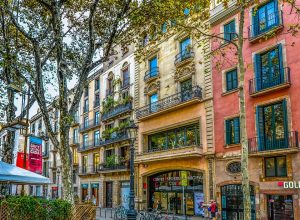Oysters Overboard: A Fresh Wave of Restoration in the Chesapeake Bay
The Return of the Oysters
In a remarkable effort to revitalize the Chesapeake Bay, nearly 25,500 oysters were planted in a carefully managed reef—part of an oyster sanctuary in the stunning St. Mary’s River—just this past Monday. These bountiful mollusks were sourced from three dedicated oyster growers integral to Maryland’s thriving aquaculture scene.
The Journey: From Farm to Reef
The story of these resilient oysters unfolds against the backdrop of the COVID-19 pandemic, a time when oyster growers faced unprecedented challenges. With restaurants shuttered, these industrious farmers struggled to sell their harvest. According to Amy Jacobs, Chesapeake Bay director with The Nature Conservancy, this initiative is a beacon of hope and resilience.
The SOAR Program
Thanks to the Supporting Oyster Aquaculture Restoration (SOAR) program, these farmed oysters—once deemed unsuitable for the restaurant market—are getting a second chance. Jacobs elaborated, "These mature oysters may not appeal to diners anymore, but they play a crucial role in restoring our ecosystem."
Why Size Matters
These mature oysters are not just big; they offer habitat to a plethora of aquatic wildlife. The structure of the oyster shell becomes a welcoming shelter for crabs, small fish, and shrimp, creating a lively community in the waters of the oyster reef.
Water Filters: Oysters have a remarkable ability to filter pollutants from the water, contributing significantly to the health of the Chesapeake Bay.
- Biodiversity Boost: The reefs they create attract important species like striped bass, bolstering the delicate balance of the local ecosystem.
A Growing Population
These larger oysters are at a pivotal stage in their life cycle, categorized as “diploid” oysters, meaning they are ripe for reproduction. This summer, they could potentially produce young oysters, further amplifying the bay’s oyster population. Jacobs excitedly notes that by year’s end, Maryland will have planted around 1.5 million oysters on reefs—an astonishing achievement for local aquaculture growers.
Collaboration for a Cause
The success of the SOAR program is a testament to cooperation and collaboration across various sectors. With support from environmentalists, state agencies like the Maryland Department of Natural Resources, and local oyster growers such as Johnny Oyster Seed Company, Loose Stones Oyster Company, and Joseph C. Gardener, this initiative is setting a positive precedent for marine conservation.
A Bright Future for Oysters
The restoration of oysters in the Chesapeake Bay is more than just a win for the environment; it’s a triumph of community spirit and sustainable practice. As these mollusks re-establish their presence in this iconic ecosystem, they remind us of the delicate interconnections within our natural world.
Join the movement in supporting local aquaculture and marine restoration. Together, we can help keep the Chesapeake Bay vibrant and thriving for generations to come.
For further details on how you can get involved, check out the resources provided by The Nature Conservancy and local aquaculture initiatives. Your commitment can make a significant difference!






